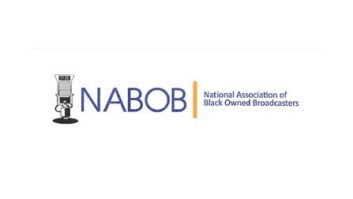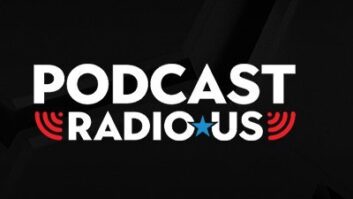(click thumbnail)This icon has been established to identify syndicated content. Read more at feedicons.com.In the last few years, radio stations have begun to investigate how podcasting can be used to enhance traditional broadcasting.
Due to the market explosion of portable media players, driven by increased popularity and falling prices, podcasting has become a valuable method for reaching more listeners. Podcasting can be a source of new revenue and quickly is becoming a service that listeners expect.
What you Need to Know
Podcasting, in its simplest form, is audio that can be downloaded to a computer or portable media player and listened to at a later time. There are two major components of a podcast, the audio file and the RSS file.
Most podcast audio segments are compressed MP3 files. Other file formats, such as Apple’s AIFF can be used, but the MP3 format is by far the most popular.
The second component of podcasting is the Really Simple Syndication (RSS) file. RSS files are the key to syndication. They make the content available to applications, often called aggregators or podcatchers, and other Web sites.
RSS files, referred to as RSS feeds once made available online, contain information about the podcast such as the title, Web site URL, description and a link to the audio file itself (more details may also be included). RSS is a form of the Extensible Markup Language (XML) and it is this agreed-upon specification that allows for such a wide range of applications and Web sites to read and understand your RSS feed.
(click thumbnail)FeedForAll is a popular automation tool for generation RSS feeds.Before we look into implementing podcasting, we will take a look at how radio stations can profit, and issues that you may potentially encounter.
Podcasting has the ability to be profitable in a number of ways.
Foremost, making podcasts of popular broadcast shows will widen your audience and increase listener loyalty. Increased Web traffic will add revenue if you use banner ads, and with these banner ads you can advertise radio station shows and services, or sell ad space to underwriters.
Some radio stations also require registration to access podcasts. This allows for the collection of listener demographics and contact information. Stations may also want to consider charging monthly or yearly fees for access to popular podcasts (as Rush Limbaugh began doing in 2005). Last, a popular method that has emerged is the adoption of underwritten mini-commercials that precede podcasts.
(click thumbnail)Make your podcast links easy to access on your Web page.
Podcasting is not just profit and potential; there are a host of issues that must be explored before you begin serving up podcasted material. Most issues fall into two categories- hosting issues and copyright issues.
Even compressed audio files can take up substantial storage space on servers if left unchecked. Although sizes vary dramatically based on quality and sampling, one hour of MP3 audio easily can occupy 30 to 60 MB of space. Make sure that you have ample storage space to accommodate your daily broadcasts.
Many broadcasters help to mitigate this issue by only posting the last five shows of any particular podcast. By keeping older content off of your server, most storage problems will be alleviated.
Bandwidth issues, perhaps the most frequently overlooked consideration, can create big headaches for server administrators. Popular content has the potential to bring old hardware to its knees. Radio stations that pay for bandwidth (or have monthly bandwidth limits) may want to evaluate current bandwidth use carefully and consider a slow and steady podcasting implementation.
Even the best server hardware may not be able to survive what has been coined as the “Digg Effect” (also known as the “Slashdot Effect”). Popular social news sites like Digg.com and Slashdot.com have the ability to route massive amounts of visitors to smaller sites. Although definitive numbers do not exist, the “Digg Effect” has been reported by some server administrators as causing several thousand hits per minute for prolonged periods of time.
Server administrators will need to be prepared in advance to identify spiking content and possibly remove it until things calm down. The “Digg Effect” is magnified in situations where media files are involved (like a popular podcast), so it is an important issue to consider when podcasting.
An entire article could be written about the legal issues concerning podcasting.
In general, radio stations need to follow the fair use doctrine in U.S. copyright laws; this is something that broadcasters should already be aware of. The most important thing broadcasters need to consider, in relation to podcasting, is that it is illegal to redistribute commercially licensed music without a license. Obtaining licenses for commercial works can be difficult and sometimes impossible. For this reason, few stations podcast shows with blocks of music (due to the work required to edit out the commercially licensed content).
If a station wants to include music, one thing they can do is feature independent or Creative Commons licensed music. Creative Commons licenses do not always mean you can redistribute the work, so you still need to read the license. If you would like to read more about legal issues concerning podcasting we recommend you visit the Podcasting Legal Guide at wiki.creativecommons.org.
How to Begin
Podcasts transform from content sent over the airways to files on a listener’s MP3 player in just a few steps.
Most stations already have the content generated that they need, and it is likely to already be in a digital format. If this is not the case, then your first step will be to capture your content into a non-compressed digitized format (such as a WAV file).
As mentioned, the audio file can be compressed into a variety of formats, but the most common encoding for a podcast is the MP3 format. Your station probably already has, and is familiar with, an audio editing/converting software package that can be used to create the MP3 files for your podcasts. If not, a free product called Audacity is capable of editing audio files and MP3 encoding (using the free LAME MP3 encoder). You can find Audacity at audacity.sourceforge.net.
Before you compress your audio file you will want to perform any necessary editing.
You may want to add segments like station identifiers, advertisements or bumpers to your audio file. A bumper is a brief piece of music that starts off, finishes or separates part of your podcast. You will also want to remove dead air, copyrighted material or anything else you do not want included.
While editing, please keep in mind that the length of your podcast is an important factor. Summary podcasts less than 10 minutes in length are more popular, but you may want to also have longer segments if listeners are looking for the entire show.
Once your content is fully edited, you are ready to compress.
In simplest terms, the MP3 file you wish to podcast can vary in sample rate (in Hz), sample format (in bits) and length. The higher the sample rate and format the larger your file will be, although you will benefit from higher quality. You will want to consider your content (the quality it requires) and your storage restrictions when setting these values. A sample rate of 44,100 Hz and a sample format of 32 or 64 bits are the norm. If you have many files to convert to MP3 you may want to look into a batch/scripted LAME encoder or something like www.audioconvert.com.
Once the MP3 file is ready, you will need to create or edit your RSS feed. Although you can create RSS feeds by hand (an excellent tutorial can be found at rss-specifications.com) there are several tools to automate this task. The most popular software for creating feeds currently is FeedForAll and can be found at feedforall.com.
Once you have both components of your podcast, it is time to publish them on your station’s Web site. Have your podcast links easy to access on the Web page to assist listeners in subscribing to them.
You may want to add your podcast to a directory so that people who do not visit your page are also able to find them. Three popular free podcast directories are iTunes, iPodder.org, and PodcastAlley.com.
Podcasting services offered by radio stations are a popular supplement to live broadcasts. They allow listeners to catch missed shows and serve as a valuable tool to increase listeners, loyalty and profit. With so many broadcasters already providing these services at some level, radio stations not yet podcasting should consider the advantages sooner than later.















